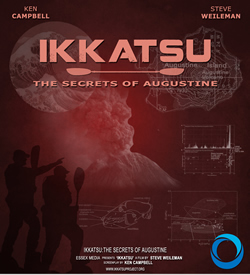Big Creek loop
1890 Olympic Expedition
We turn off 101 at Hoodsport and before long we are standing at the trailhead. The trail starts and ends at the Big Creek Campground, which is still closed for the season. The trail gains almost 1000 feet in less than 2 miles, so I know there will be some stout uphill stretches along the way. There have been several strong wind storms out here this winter and I expect we’ll see some signs of their passing. Once we’re geared up and have the boy wrestled into the backpack, we are on the trail.
Not far from here is where Lt. O’Neil’s party entered the mountains back in 1890. Their goal was to produce an accurate survey of the Olympic Mountains and the river valleys that ran to the sea, as well as to construct a cross-peninsula trail that would connect towns like Hoodsport and Union City with Gray’s Harbor and Hoquiam. Their story, as told in the Robert Wood book Men, Mules and Mountains, is a tale of real exploration and raw discovery, men traveling through country that they know has never been seen by human eyes.
We climb and climb, then climb some more. The first part of the trail runs high above the waters of the creek, and I have trouble hearing the babbling of the brook at all. Near the cutoff for Mount Ellinor, we descend to the confluence of Big Creek and Branch Creek, and have lunch on a boulder planted in mid-stream near a small falls. Below our perch is a deep hole in the creek, where the bottom just drops away. I don’t know if there are trout in these waters but if there are, I’ll bet there’s one in there. Micah and I sit on a wooden bridge and throw pebbles into the tumbling water.
the bottom just drops away. I don’t know if there are trout in these waters but if there are, I’ll bet there’s one in there. Micah and I sit on a wooden bridge and throw pebbles into the tumbling water.
We can see damage from the wind storms everywhere. Trees choke portions of the creeks and in one spot, the place that the trail guide described as “a good bridge above a gorgeous cascade,” the creek’s bank has been sliced away and a temporary trail built well above the route of the one that used to be here. Assorted trees lie across one another in the stream bed, like a logging accident.
The green under layer of the forest is dotted with the beautiful white flowers of trillium. Trees are in bud, a few weeks shy of full leaf.  On the musty damp of rotting logs, colonies of bear’s bread and turkey tail adorn the shadowy surfaces. This is a rainforest, after all, even if our weather is better, at present, than O’Neil’s.
On the musty damp of rotting logs, colonies of bear’s bread and turkey tail adorn the shadowy surfaces. This is a rainforest, after all, even if our weather is better, at present, than O’Neil’s.
The descent is mellow and pleasant, bits of sunlight bouncing through the canopy, that seem to catch us unawares. Other than a partially-screened view of Mount Washington at one point on the way up, however, there have been no grand vistas on this hike. I am not complaining, not exactly, but if I have to do that much climbing, I’d like it to come with a view. Which is a lot like O’Neil’s men felt about the place as well.
We have it easy these days though. Where the O’Neil party felt blessed if they happened across a game trail here and there, this and other Olympic  trails of today are well made and easy to follow. The mountains and the terrain are the same though, even after all these years. Any hike through these parts is a glimpse of history, a new insight into what is unique and valuable about the Olympics.
trails of today are well made and easy to follow. The mountains and the terrain are the same though, even after all these years. Any hike through these parts is a glimpse of history, a new insight into what is unique and valuable about the Olympics.











